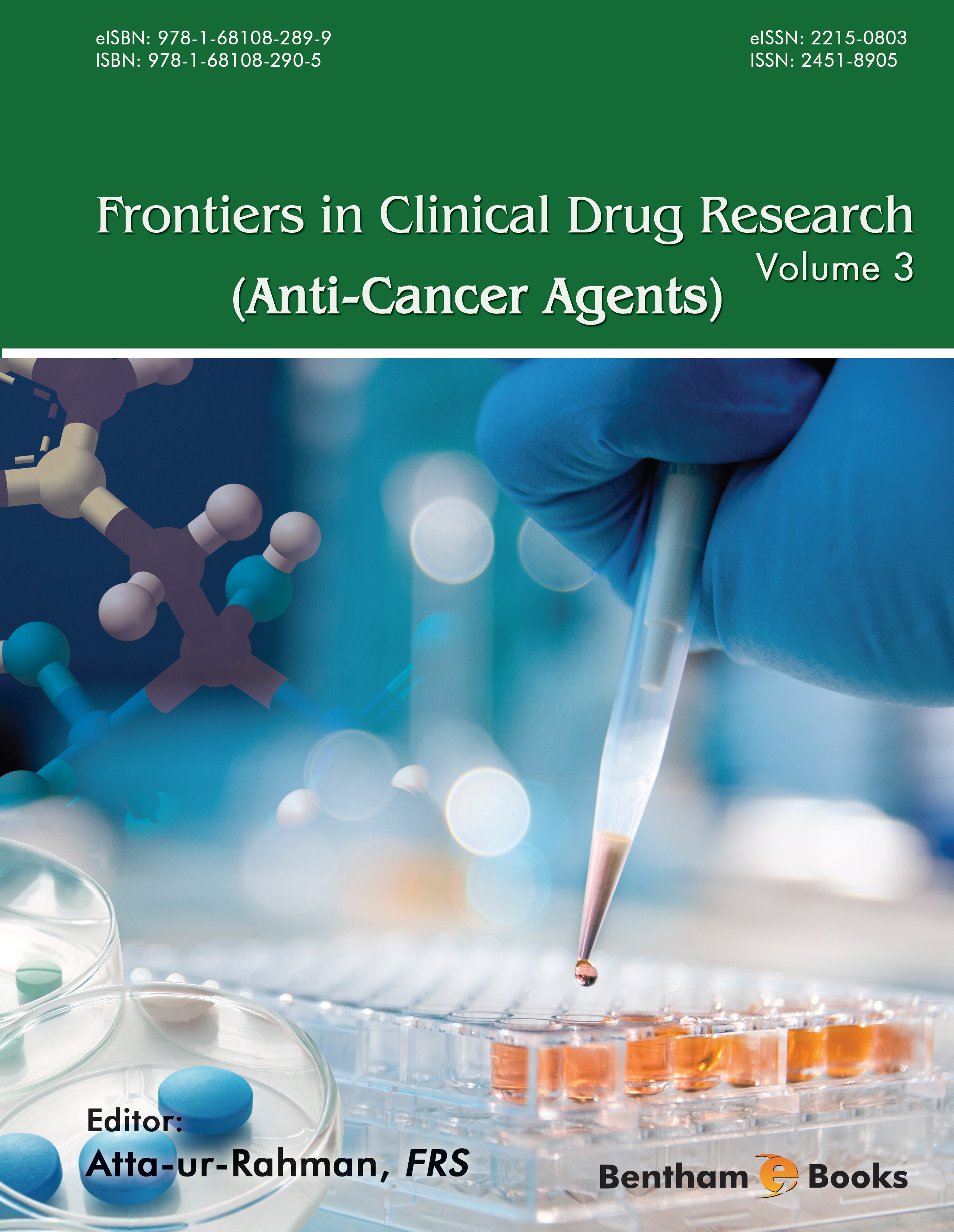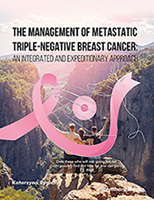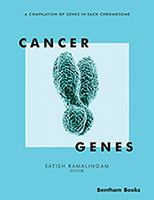The third volume of Frontiers in Clinical Drug Research - Anti-Cancer Agents presents seven cutting edge reviews on recent developments in various therapeutic approaches against different types of cancer.
Studies have revealed that the Epidermal Growth Factor Receptor (EGFR) is involved in the pathogenesis and progression of different types of carcinoma. Tumor resistance to agents targeting the Epidermal Growth Factor Receptor (EGFR) is common, and is well recognized as a major challenge. In first two consecutive chapters, Rodney B. Luwor provides an overview of the progress in targeting the EGFR that will lead to overall refractory outcomes to anti-EGFR therapies. In Chapter 1 he discusses on the resistance mechanisms driven by alterations in ligand and receptors of the EGFR family as well as on the cross-talk between EGFR receptors and non-EGFR family members. In Chapter 2 the same author describes the current understanding regarding the resistance mechanisms mediated by alterations in substrates downstream of the EGFR. Luwor has also reviewed the other intracellular mechanisms that mediate both sensitivity and resistance outcomes to anti-EGFR agents in this chapter.
Melanoma is the most dangerous form of skin cancer that develops when unrepaired DNA damage to skin cells triggers mutations, which lead to the formation malignant tumors. In Chapter 3 Shukla et al., present a comprehensive review on the chemotherapeutic, immunologic, and molecularly targeted therapy approaches to the treatment of advanced melanoma.
In various tumor cells, there is increased aerobic glycolysis that represents a major biochemical alteration associated with malignant transformation. This phenomenon is known as the Warburg effect. 18F-deoxyglucose positron emission tomography (18FDG–PET), a metabolic imaging technique, is based on the avidity of cancer cells for glucose; currently, it represents the only successful exploitation of the Warburg effect for medical purposes. In Chapter 4, Abreu and Urbano focus on past and current efforts to target the Warburg effect for selective anti-cancer therapeutics.
Follicular lymphoma (FL) is a B-cell lymphoma and the most common slow-growing form of non-Hodgkin lymphoma (NHL). Studies suggest that immunotherapy, radioimmunotherapy and vaccines result in high response rates and survival in FL patients. Chapter 5 by Panizo et al., briefly describes the biology and conventional treatment of follicular lymphoma with immunochemotherapy. They also discuss novel immunotherapy strategies (active and passive) for the treatment of follicular lymphoma.
The progression of cancer involves epigenetic abnormalities along with genetic alterations. The manipulation of epigenetic alterations holds great promise for the prevention, detection, and therapy of cancer. Evidence indicates that the activities of key epigenetic regulators including DNA methyltransferases and histone modification enzymes are sensitive to cellular metabolism. Wong and Yu in Chapter 6 discuss that the cross-talk between epigenetics and cancer cell metabolism may reveal novel therapeutic opportunities. They also highlight their implications in oncogenesis, and potential therapeutic approaches to target these cancer specific abnormities.
Apoptosis is a programmed cell death, which involves various biochemical events that lead to characteristic cell changes and death. Dysfunctions of apoptosis pathways promote oncogenesis as well as confer resistance of cancer cells to most conventional therapies. In Chapter 7 by Moorthy et al. focus their discussion small molecular anticancer drugs, especially target proteins, responsible for apoptosis.
I hope that the current volume of this book series will provide fresh insights into development of new recent approaches to anti-cancer therapy for interested researchers and pharmaceutical scientists. I would like to thank the editorial staff, particularly Mr. Mahmood Alam (Director Publications) and Mr. Shehzad Naqvi (Senior Manager Publications) for their hard work and dedicated efforts.
Atta-ur-Rahman, FRS
Kings College
University of Cambridge
Cambridge
UK





